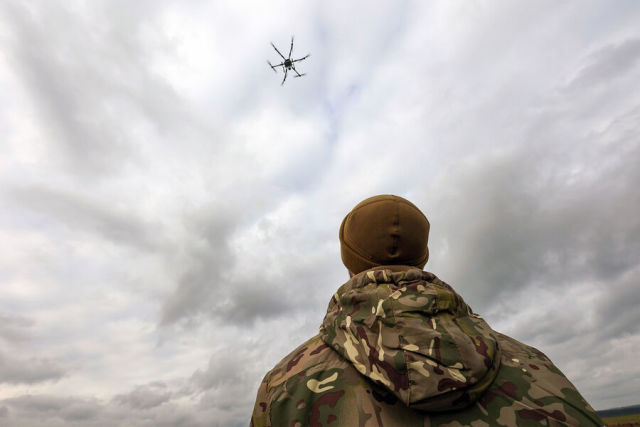Bloomberg: low temperature led to "freezing" of military drones in Ukraine In Eastern Ukraine, the air temperature remains below zero.
This leads to the breakdown of drones and, according to military analysts, to a decrease in morale. At the same time, experts believe that the thaw will not benefit both sides - cars will start to get stuck in the mud.
The frosty weather that has recently set in the east of Ukraine has led to the fact that batteries for unmanned aerial vehicles and radio stations freeze and they have to be recharged twice as often, writes Bloomberg. In addition, reconnaissance drones are hampered by poor visibility, which "sometimes silences guns along the front," the article says. In the east of Ukraine, -6 °C remains, by next week the temperature will rise to -2 °C.
The difficult conditions for the search are also confirmed by Ed Arnold, a former British infantry officer, now he works at the Royal United Services Institute. According to him, the weather affects not only the efficiency of equipment, but also the efficiency of personnel.
Nevertheless, sub-zero temperatures favor the passage of heavy equipment, since the frozen ground can withstand it. But the expected winter offensives on both sides may not happen either now or during a longer cooling period, Bloomberg writes.
Military analysts in Ukraine and other countries are of the opinion that the passage of military equipment is "just one of many factors that commanders should take into account before risking a new major attack."
Much more important is the state of the military and the available reserves, equipment and ammunition. According to Arnold, morale, mobility and logistics can be undermined in cold conditions. The agency draws attention to the fact that "for any offensive breakthrough" soldiers need to spend days away from shelters.
Arnold noted that analysts are most concerned about the change in the weather. If frosts are replaced by a thaw, then wheeled vehicles can get stuck in the mud, which will leave offensive troops without supplies. At the same time, tanks, for example, will be able to work, but only if fuel trucks arrive on time.
Due to the thaw, soldiers may be left without food, and artillery may be left without ammunition and the possibility of rapid movement after firing (to avoid counter-battery fire).
"Ukrainians have a much better option. I would say that with what they already have, and with everything that the West gives them, they have one chance for a big breakthrough - so don't rush," Arnold is sure.
"The recently announced deliveries of armored combat vehicles from the United States, Germany and France, as well as signs that they may be followed by NATO-standard tanks, will better prepare Ukraine for a new offensive," the article says.
But the Ukrainian authorities are worried that Russia may launch an offensive from Belarus, located just 150 km north of the capital of Ukraine, the agency writes.
Now fighting is underway in the area of Bakhmut (Artemovsk) - "slow, but dwindling resources." Bloomberg notes that the Russian Armed Forces are trying to capture Bakhmut and nearby Soledar, and Ukrainian troops are attacking Kremennaya and Svatovo.
The agency assumes that the fighting in Bakhmut "will remain intense regardless of the weather, because Russian commanders have changed tactics, relying on infantrymen to break through the defenses," replacing massive artillery barges with it.
Earlier, the acting head of the DPR, Denis Pushilin, said that the capture of Soledar opens the way to the complete taking of the republic under the control of the Russian military. And the liberation of Artemovsk and Seversk will allow to destroy the front line in the DPR, he believes.
Angelina Milchenko

